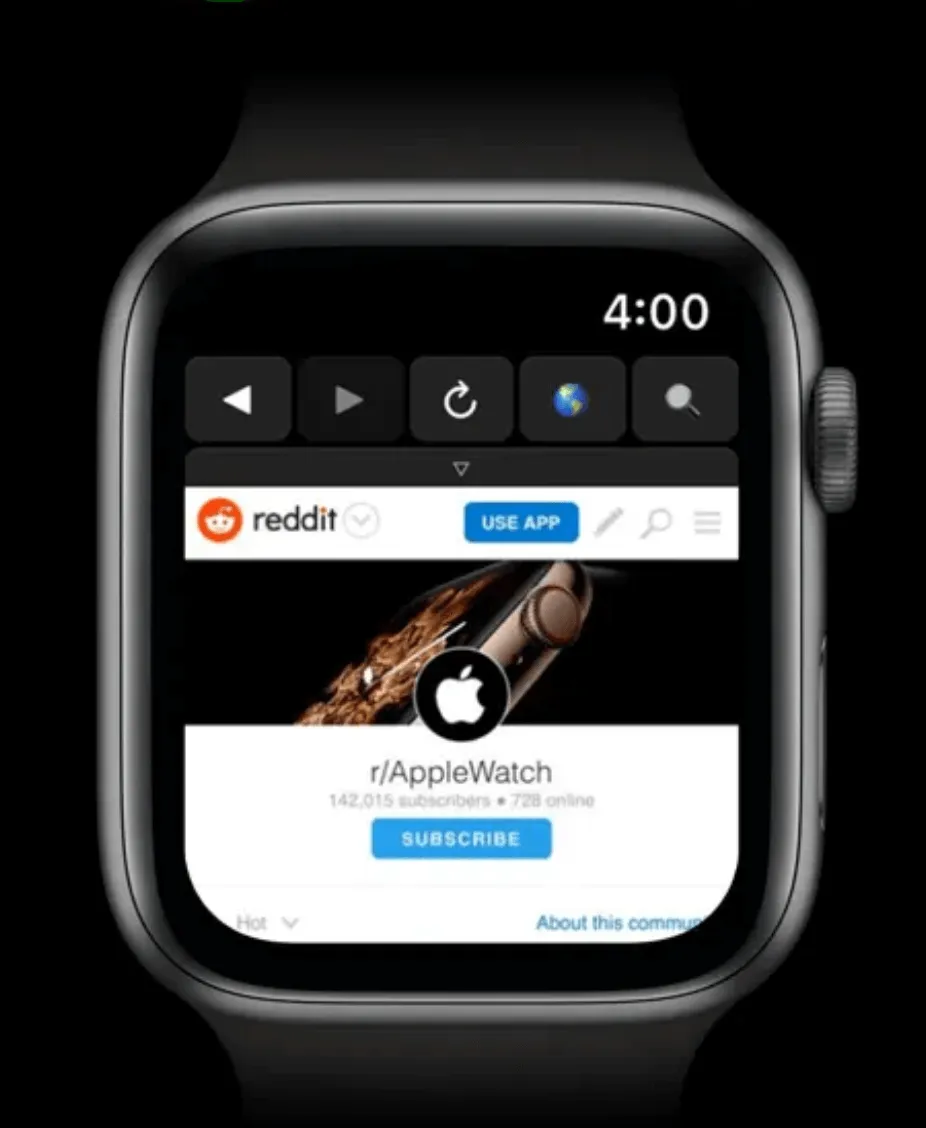Smartwatches are gradually becoming increasingly powerful, and it’s already possible to do many of the things we usually do on our smartphones on the watch itself. However, smartwatches are meant to be companions to smartphones, so they aren’t as powerful as some would like. This is why many people wonder, can you browse the internet on a smartwatch?
You can browse the internet on a smartwatch, at least in most cases. Some older or off-brand models don’t support the feature, and not all smartwatches have web browsers as dedicated apps. The small screen size can also be a problem, so it’s not necessarily ideal, but it is possible.
Not all smartwatches handle web browsing in the same way, and different models have different ways to approach it. Let’s compare the different brands and models to see how you can browse the internet on your smartwatch.

What You Need To Browse The Internet On A Smartwatch
There are two basic requirements before you will be able to browse the internet on your smartwatch.
An Internet Connection
The first thing you need is a connection to the internet. Some watches that can be considered smartwatches don’t have this functionality at all. For example, some off-brand smartwatches or watches that are mainly fitness trackers may have only one connection method: Bluetooth. These are unable to connect to the internet.
However, if you have a smartwatch that can connect to Wi-Fi or a cellular network, it should be able to connect to the internet.
The most common example is Wi-Fi, as most true smartwatches have Wi-Fi connectivity. However, the high-end models will also support cellular connectivity through a physical sim card or e-Sim. If you have such a model and activate a data plan with your cellular network, you should be able to connect to the internet.
A Web Browser
The second essential component for browsing the internet on your smartwatch is a web browser app. Such apps are available for most popular smartwatch brands, and some even have pre-installed browsers (though they may be hidden, as in the case of the Apple Watch).
Browsing The Internet On Apple Watch
If you have an Apple Watch, you can browse the web natively without installing a third-party web browser app. There’s already a browser integrated into the system, but it’s hidden, and you have to use a link to open it.
For example, if you use your Apple Watch to ask Siri to search for something on the web, you can tap on the results to open the web browser. Another option is sending yourself a text message or email with a website’s URL, and when you tap on that link on your Apple Watch, it will also open in the browser.
There are also third-party apps available on the App Store that you can try. One that I often recommend is Parrity, which works remarkably well and eliminates some of the frustrations associated with internet browsing on a smartwatch.
Browsing The Internet On Samsung Galaxy Watches
Samsung’s smartwatches are considered some of the best, most potent smartwatches on the market, and it is entirely possible to browse the internet on them.
There are plenty of web browser apps that owners of Samsung Galaxy smartwatches can choose from, but perhaps the best option is Samsung Internet for Galaxy Watch. It is lightweight enough not to take up much space or RAM, so it shouldn’t impact your watch’s performance.
To install Samsung Internet, simply open the Play Store on your watch and search for it. You can then install it and browse the web on the go.
If you can’t find the Samsung Internet app in the Play Store, it might be because your watch’s software is outdated. Connect to the internet (preferably Wi-Fi) and search for software updates, then install any update you find. This should resolve the problem.
There are other browsers that work well, too. For example, people who are used to the old Gear 2 browser can still install it on newer smartwatch models.
Browsing The Internet On Wear OS
If you have any other brand of smartwatch that uses Google’s Wear OS, you still have plenty of options.
For example, Wear OS supports Samsung Internet, so you can install that on your Wear OS smartwatch. However, most Wear OS users prefer to use the standalone Web Browser for Wear OS, also known as WIB. It’s a convenient way to browse the web on your smartwatch since it has more features than some other browsers, but it’s still small and lightweight.
Watches That Don’t Support Internet Browsing
There are two classes of smartwatches that don’t support internet browsing in any way.
Off-Brand Smartwatches
Some off-brand smartwatches may support web browsing, especially if they use standard smartwatch operating systems such as Wear OS. However, there are many proprietary smartwatches on the market, often manufactured as cheap alternatives, that don’t use standard software and aim to deliver the minimum of features.
Such smartwatches usually don’t have app stores and might not even support Wi-Fi connectivity, so they are unlikely to have web browsing capabilities.
Fitness Trackers
The lines between fitness trackers and smartwatches are blurring. Smartwatches often feature better health-tracking capabilities than some fitness trackers and many fitness trackers are getting smartwatch capabilities these days. However, a watch that’s strictly a fitness tracker would probably not be able to support web browsing.
For example, most Fitbits and Garmin sports watches can’t connect to the internet and don’t have web browsing capabilities. However, with Garmin venturing into the realm of full-featured smartwatches, we might see this change in the next few years.
For now, though, if you want to browse the web on your watch, it’s worth spending a bit more to get a smartwatch rather than a fitness tracker.
Caveats Of Browsing The Internet On A Smartwatch
As great as it sounds to be able to browse the internet without holding your phone, tablet, or laptop, it’s not really the best way. There are several disadvantages to browsing the web this way.
Screen Size
The size of the smartwatch’s screen is the first disadvantage. Not only does it make some parts of a website difficult to read, but websites are generally not configured for such small displays. This causes strange formatting errors, which could make the website difficult to read and navigate.
This is one aspect that makes the Parrity web browser so impressive. It renders web pages off-screen, then displays a snapshot of the page on your smartwatch, so the formatting usually looks much better than other browsers.
RAM And Storage Space
Smartwatches don’t have the RAM and storage capacity smartphones or computers have. This means that web browser apps have to be much smaller than web browsers on smartphones or laptops. They must take up less space and occupy less RAM than their larger counterparts.
By necessity, this means that app developers have to sacrifice some features to make their browsers work well on smartwatches.
Limited Input Methods
This is becoming less of an issue with many smartwatches or web browsers featuring built-in keyboards these days. However, with smartwatches like older Apple Watch models, the primary input method was “scribble,” which interpreted letters on the screen.
Scribbles can easily be interpreted wrong, like the difference between a lowercase “L” and a one, which often makes it difficult to get a website’s URL right.
Discomfort
Browsing the web on your wrist is not the most convenient way. Your watch may have to be quite close to your eyes to see clearly, and constantly browsing with one arm horizontally in front of you and the other angled to scroll on the watch can get uncomfortable after a while.
Conclusion
Most full-featured smartwatches support internet browsing, at least to some extent. If it can connect to Wi-Fi or cellular networks and load web browser apps, you can browse the internet with them. However, this should probably never become your primary browsing method since it is a bit inconvenient and limited.
Being able to browse the web on your smartwatch is excellent in an emergency or as a temporary measure, but it’s better to carry your smartphone with you for such purposes.

